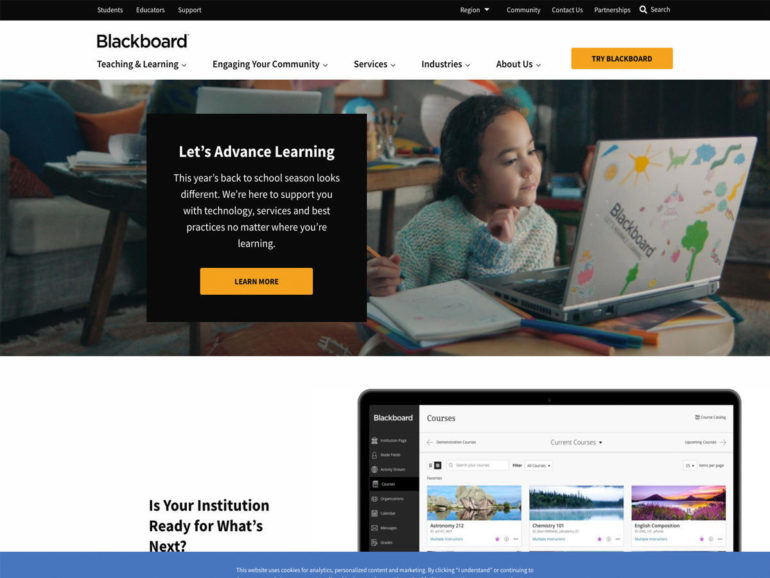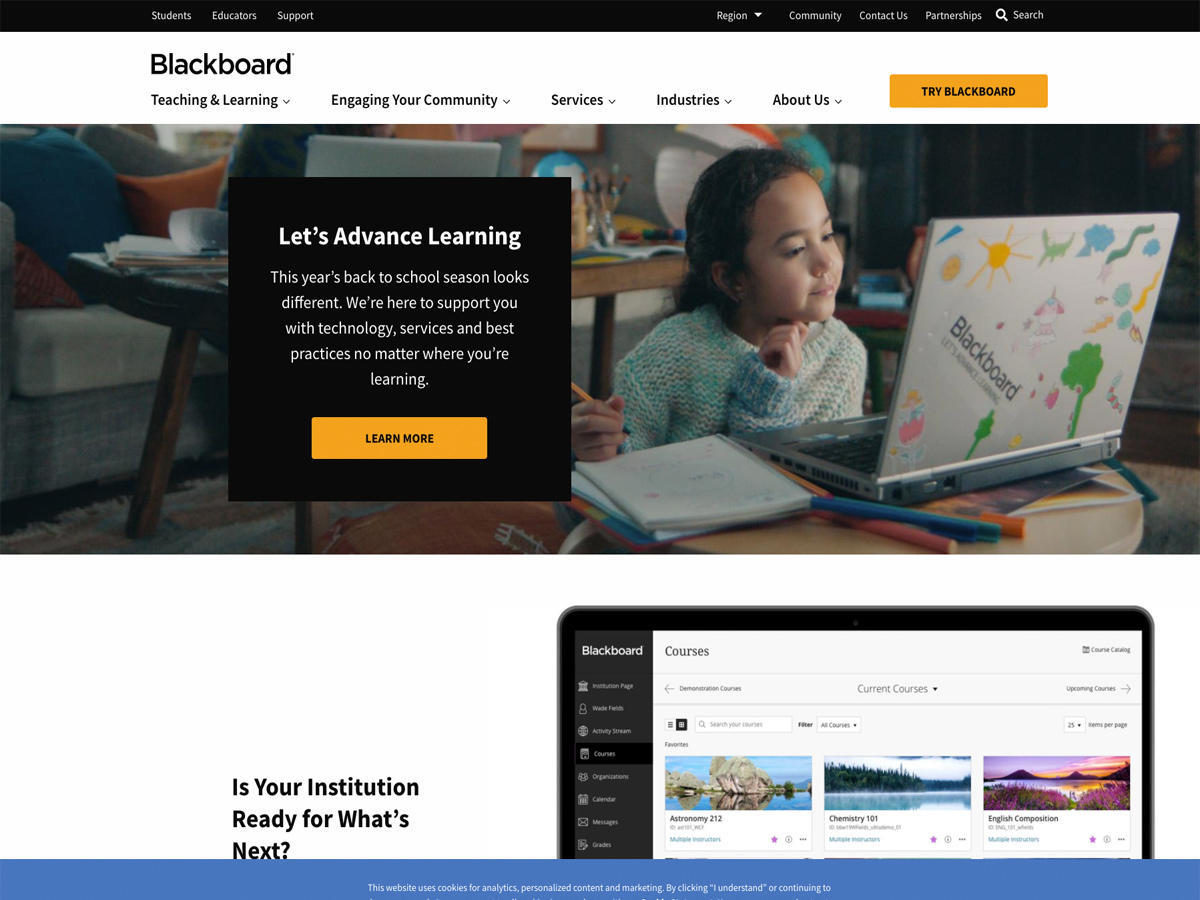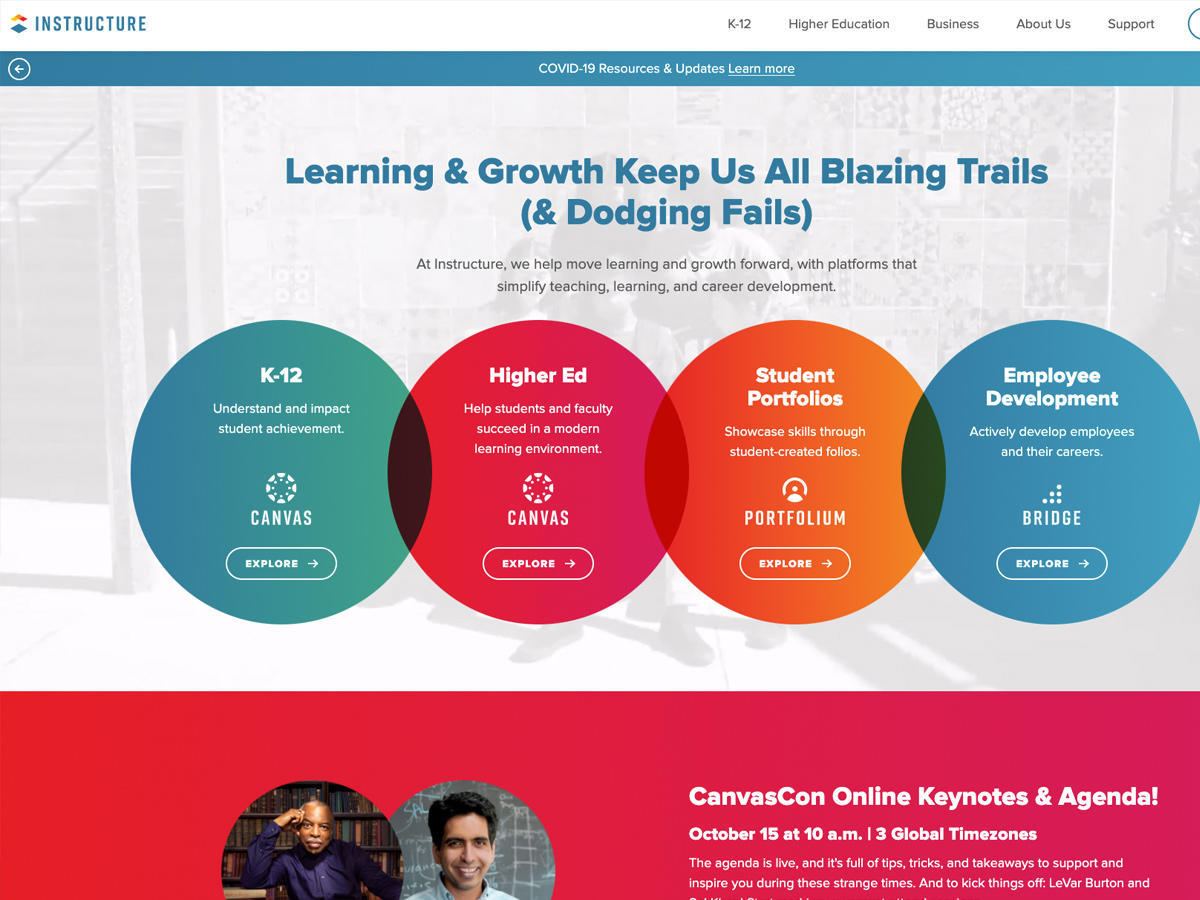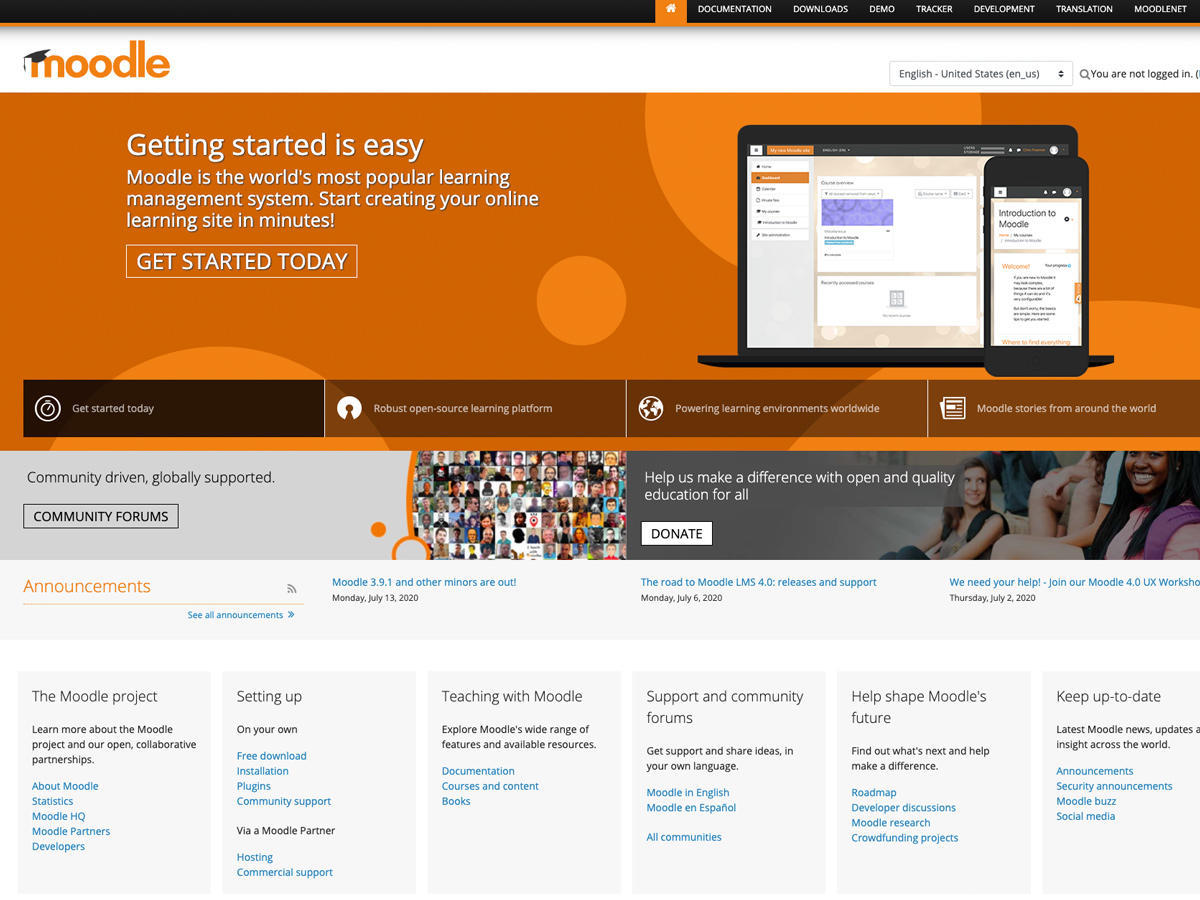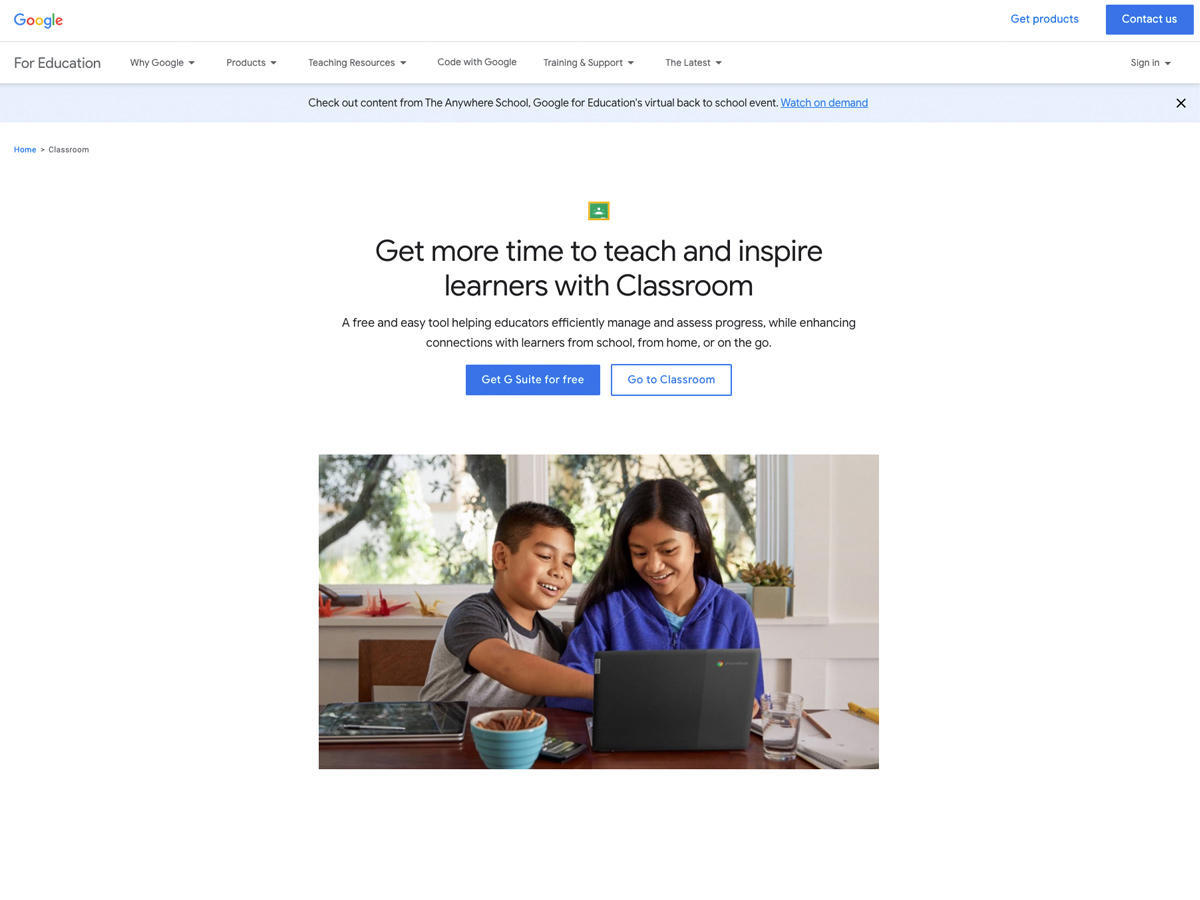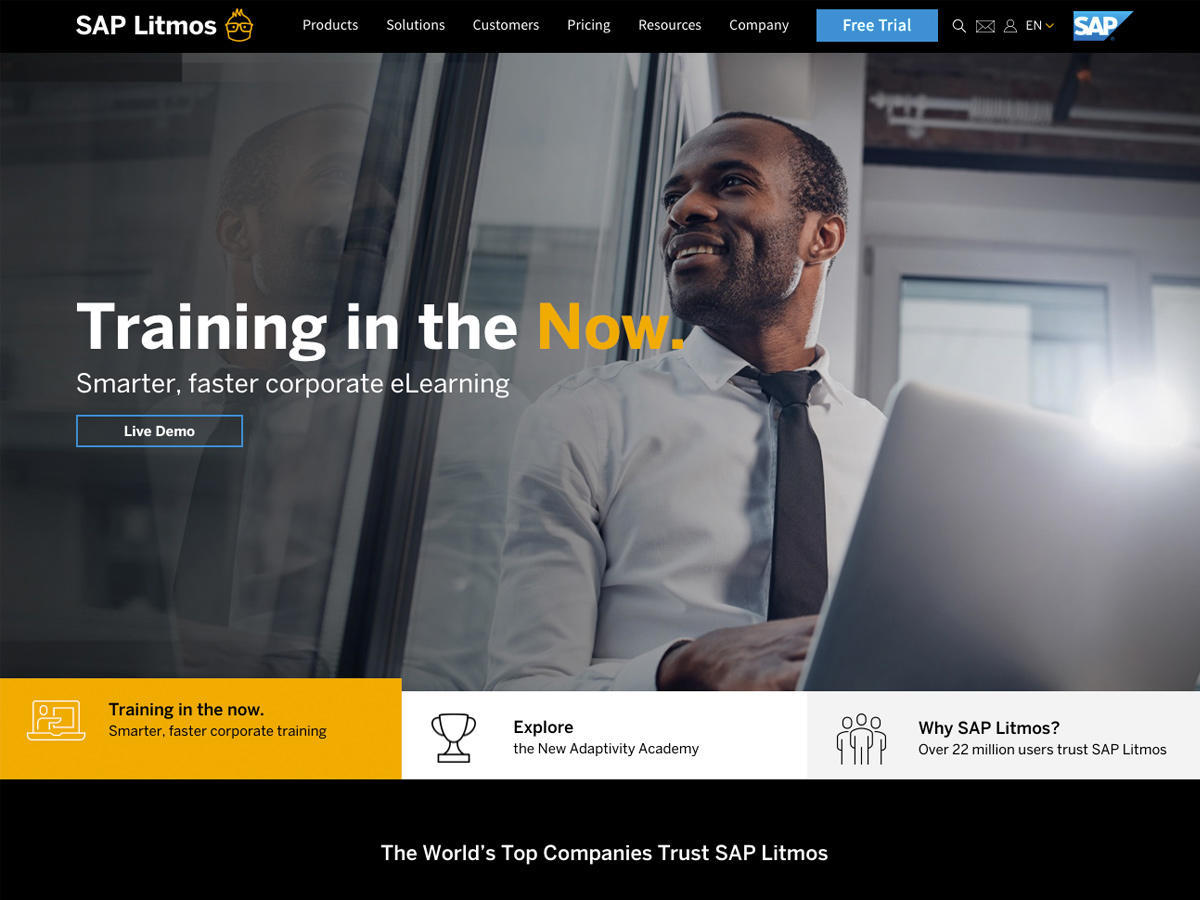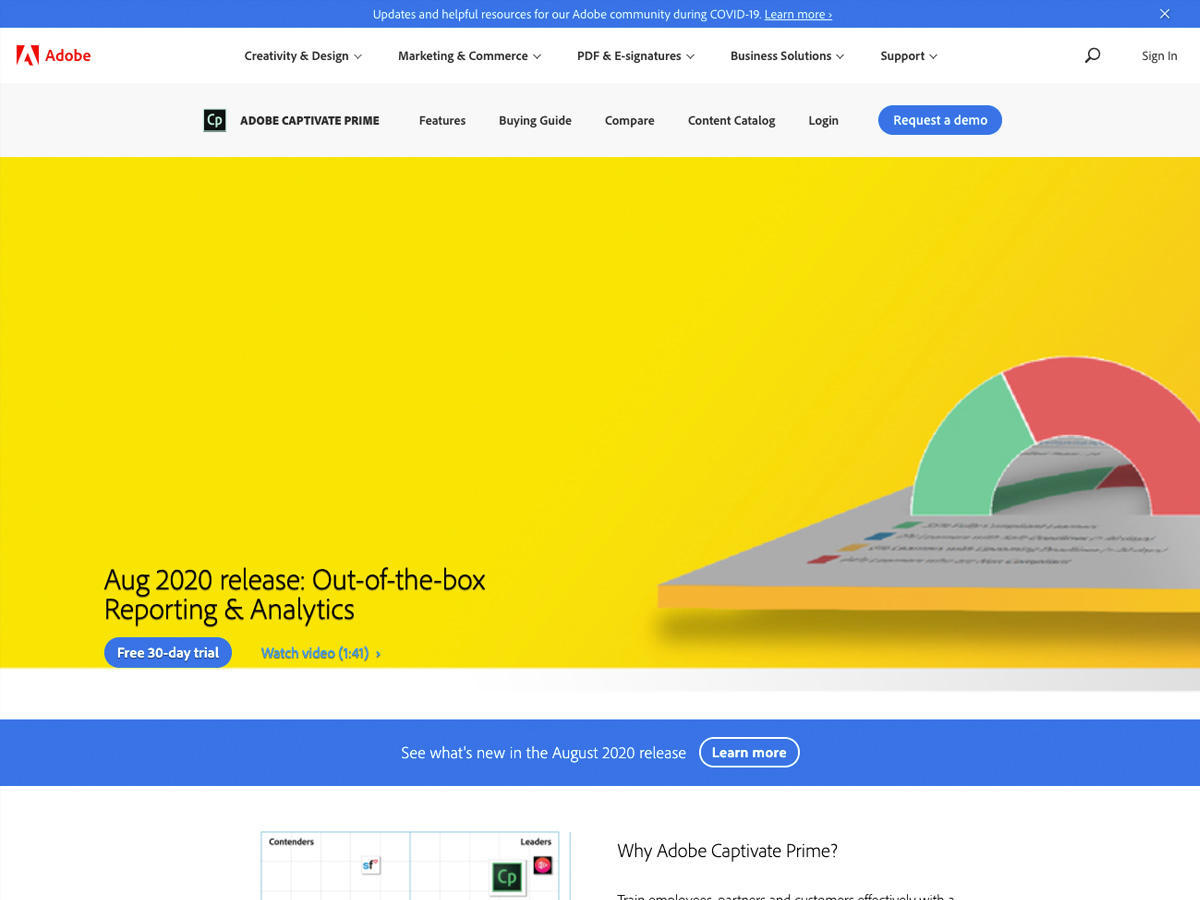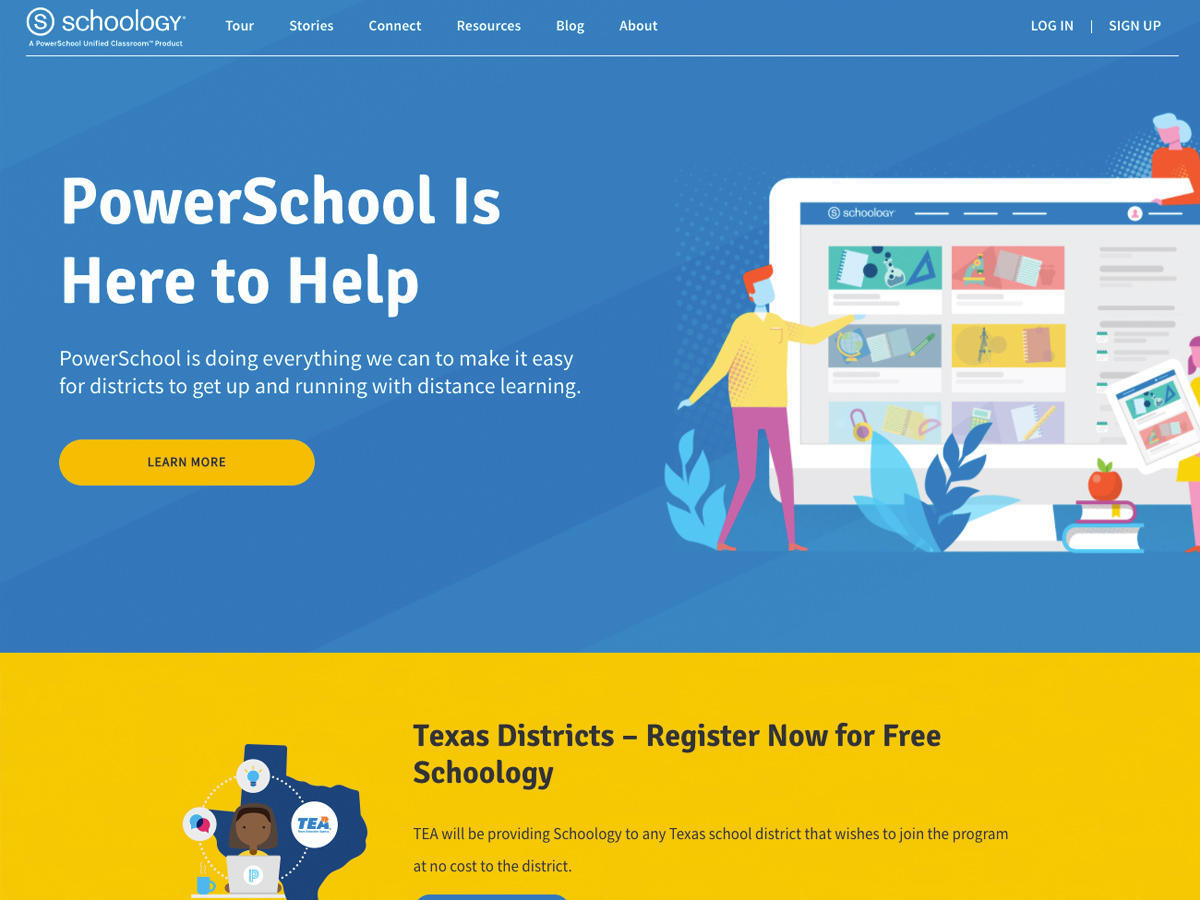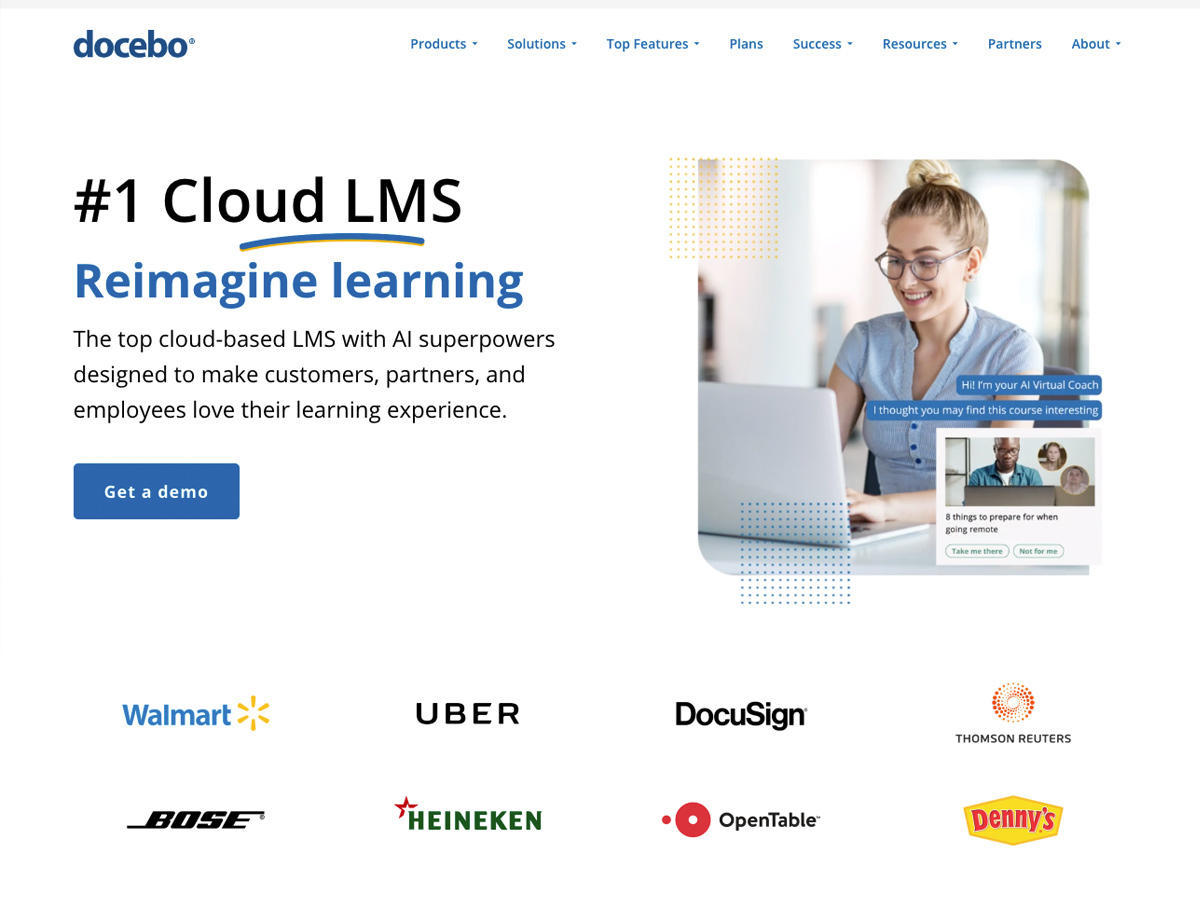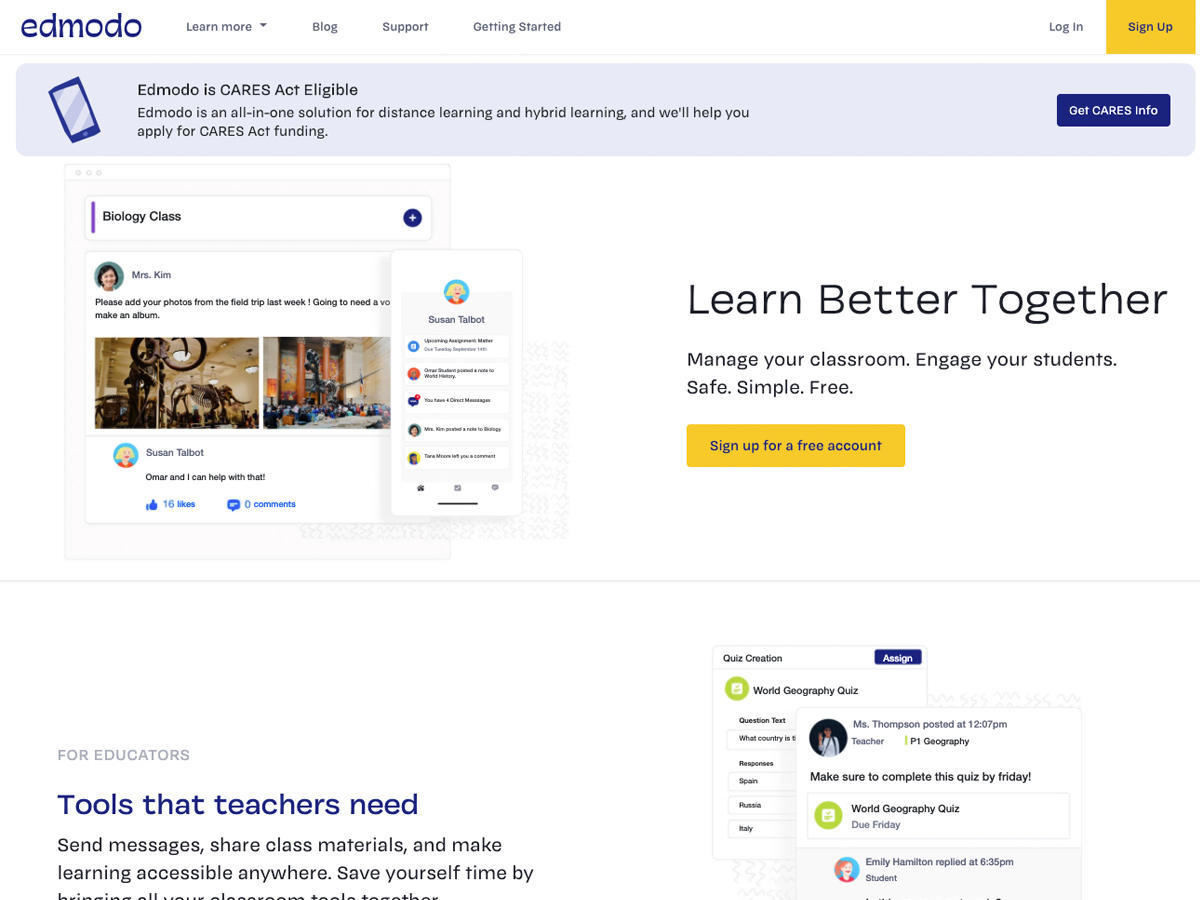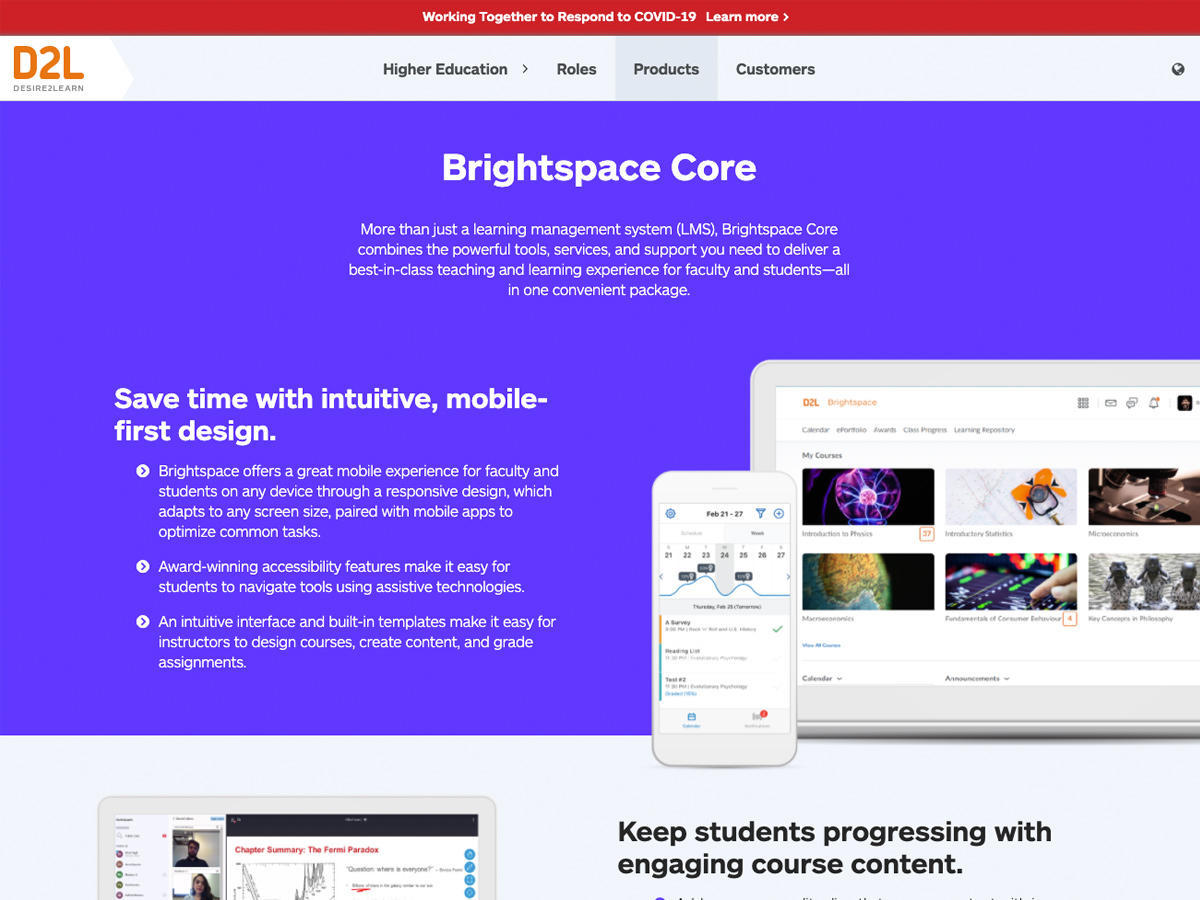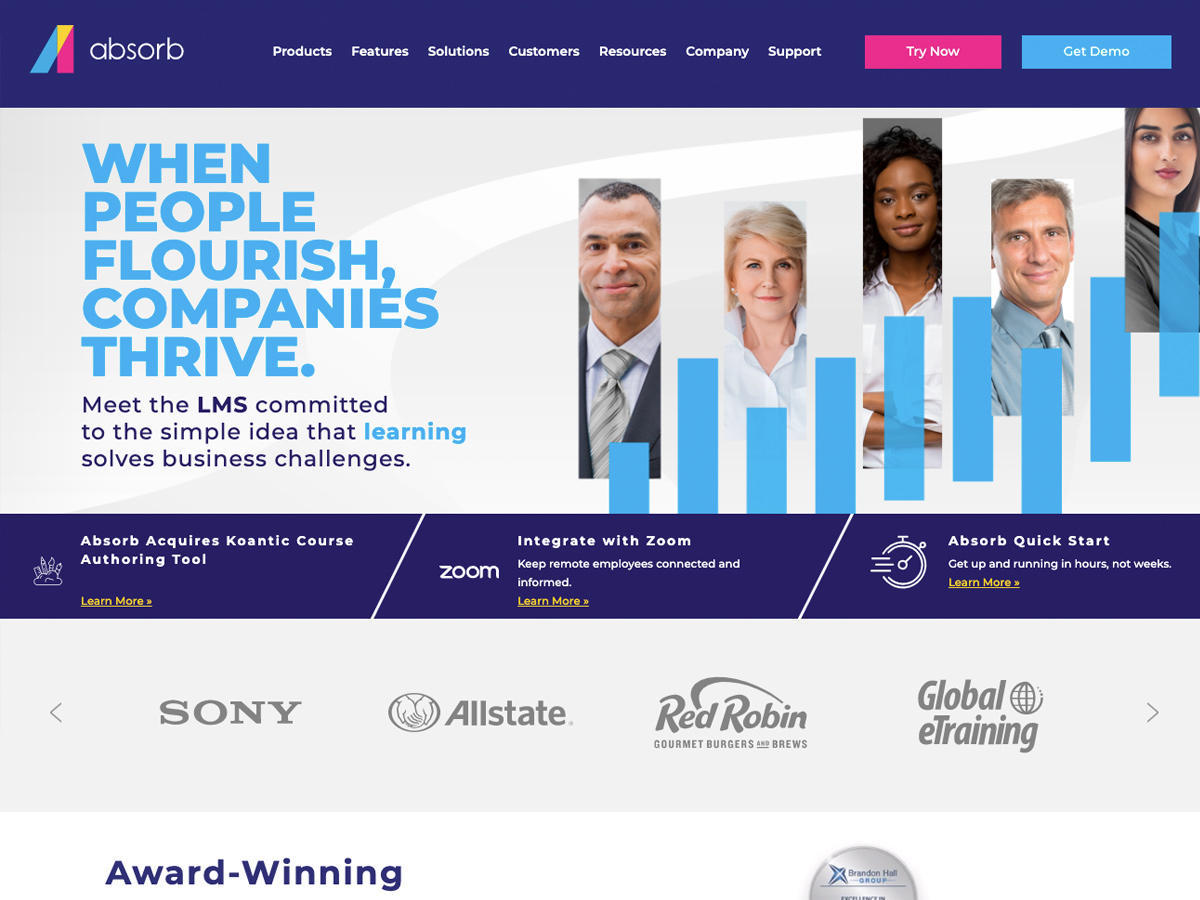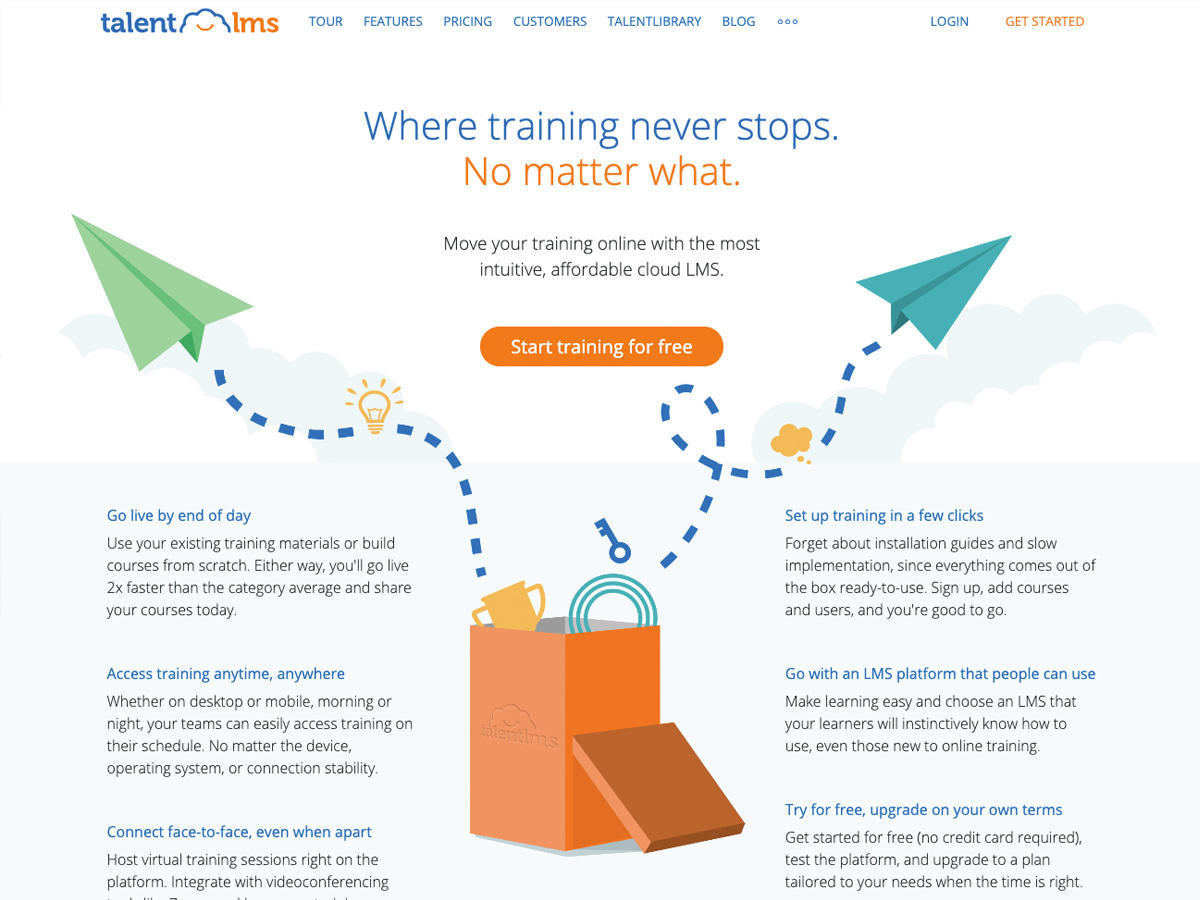What a crazy couple of years! It seems like we’ve moved forward a decade in terms of online capabilities, but it’s only been a year or so. While people all over have been impacted, one area that seems to be in the throes of existential transformation is education.
After all, traditional academic education, whether K-12 or higher ed, has been mostly about person-to-person in-classroom teaching. In fact, when I was studying for my Masters of Education, when I told the teachers’ college that I taught only online, they found it hard to believe. Of course, that was a few years back, but prior to COVID-19, most teachers expected to look their students in the eye.
Now, however, schools are picking their way carefully through an ever-changing world. Schools, districts, and parents are all making their own decisions — and that decision for many is to take education online and do so at a previously unheard of rapid pace. Other schools are opening back up. And many schools are trying to embrace a more flexible hybrid approach that lets them change up their programs at the drop of a CDC directive.
The same is true for many businesses. While many workers have worked remotely, the need for enterprise-wide remote work has not only moved face-to-face training online, it has increased the need for training because it’s less practical now to visit the next cubicle to get some help and instruction.
In the context of our new normal, we present our guide of 12 very capable learning management systems, each of which provides a different take on managing learning. We’ll show you LMS solutions tailored to K-12 and higher education, LMS solutions aimed at the enterprise and SMBs, and even one that helps you sell your own courses (AbsorbLMS) and another that optimizes the ability to provide custom certifications (TalentLMS).
So, without further ado, let’s dive into our learning management system providers. And good luck navigating our post-normal world!
The reigning king of college learning management systems
If you’ve spent any time in University, you’ve probably run into Blackboard at some point or another. Although open-source alternatives Moodle and Canvas are giving Blackboard a run for the money, Blackboard is still holding its own. For those familiar with the Angel learning management system, you might be interested to learn Blackboard acquired Angel back in 2009.
Blackboard is incredibly feature-rich, so if you have a specific way you want to operate your learning environment, the odds are you can do so in Blackboard. It’s also got specific business-oriented implementations, allowing corporate training to be managed using roughly the same interface as university training.
Blackboard’s UI has historically been cumbersome and frustrating, but the company has put a new effort into streamlining the user interface, making it more accessible in year’s past.
Canvas, originally named Instructure, was first introduced at a number of Utah colleges and universities, to replace Blackboard. While Canvas itself is open source, its parent company retains the Instructure name and provides a variety of learning management and employee development offerings.
In my experience, Canvas is really good at giving educators tools for creating educational content for students. I spent a lot less time fighting with Canvas than I did with Blackboard when creating resources for my university students. In-app communication between students and teachers is solid as well, along with a well-thought-out grade book and overall grading management system.
While Canvas is open source, most institutions license it from Instructure to avail themselves of all of Instructure’s support resources.
Open source LMS for those willing to maintain everything
Moodle, like Canvas, is open source. Unlike Canvas, Moodle doesn’t have a managed services model. If you want to use Moodle, download it, install it, set it up, manage it, customize it, and manage whatever inevitable problems arise in the process.
Moodle (an acronym for modular object-oriented dynamic learning environment) is very powerful and flexible, as you might expect from a community-maintained product with very broad market penetration. It’s also a bit fussy, and its mobile features aren’t really keeping up with what modern students expect. It works on phones, but meh.
There is a cloud-based solution, MoodleCloud, launched in 2015. If you’re interested in Moodle and don’t mind paying a monthly fee so someone else maintains the installation, MoodleCloud might be for you.
Google’s solution for learning management
I kind of wish Google had acquired Moodle because “Google Moodle” would be so much fun to say. But no. Instead, Google has Google Classroom, which is a fine learning management system but not nearly as fun to say. That said, Google Classroom’s standout feature is melding strong educational management capabilities with excellent communications tools allowing educators to communicate not only with students but their parents as well.
Google Classroom is relatively easy for educators to set up, and it provides a solid organization capability for curriculum and material. Unfortunately, some students have complained that the customization features aren’t available to them.
Of course, the big win is that Google Classroom is so tightly integrated with other Google apps, ranging from Google Calendar to Gmail, as well as Google Docs and Google Drive. If you’re embedded in the Google ecosystem, Google Classroom is an ideal extension.
Corporate training with the pedigree of SAP
So, here’s the thing: Learning audiences vary. There are, of course, schools, colleges, universities, and the like. There are also corporate training needs, where small groups or entire organizations need training. Then there are customers. Folks purchasing your company’s products might also require training, and sometimes that’s not something they can just pick up on YouTube.
What makes Litmos stand out is that it scales. We’re not talking just one classroom to 20 We’re talking scaling to millions of students. It deploys quickly, can be tuned for both abilities and roles, provides any-device access to personalized courses and content, and integrates with all of SAP’s vaunted business management technology. If you’re looking for the Cadillac of corporate learning, SAP Litmos LMS is your new best friend.
Learning management with all the power of Adobe
OK, so this is going to make your head hurt a little. Adobe provides both Adobe Captivate and Adobe Captivate Prime. They are two entirely different products. Adobe Captivate is an authoring tool that allows you to create online and mobile-based courses. Adobe Captivate Prime is not the premium version of Captivate. Instead, Adobe Captivate Prime is a learning management system that can use Captivate courses but is able to work with any course offerings.
That brings us to Adobe Captivate Prime. Prime (not to be confused with Amazon Prime — does your head hurt yet?) is aimed at corporate and organizational learning management. One of the more helpful features in Captivate Prime is a smart enroller capability that helps teachers easily assign roles and activities. Captivate Prime also has an excellent module and course organizational tools to help keep track of educational content.
One of the more interesting aspects of Captivate Prime is AI-based social learning, which transforms a traditional online activity into one that provides more value to students. The AI-based social learning starts with what is essentially a discussion forum for a particular class but optimizes it by using AI to do content curation and prioritization.
A learning management system that excels at K-12
While Schoology certainly can be used in higher education and corporate environments, it excels at providing resources for K-12 teachers. Founded in 2009 ith multiple rounds of investment from both VCs and angel investors, Schoology reports that it is installed in more than 60,000 schools (that’s individual schools, not school systems, just to be clear).
Of particular note is the partnership between Schoology and Capti, a platform designed to help struggling readers improve comprehension and fluency. Schoology also nicely integrates with Office 365 that allows teachers to create templates that students can interact with using traditional Office tools, encouraging not only knowledge creation on a specific educational domain but also skills development in apps students are likely to need later in life.
A former GPL open source LMS that’s now a paid cloud service
Docebo (pronounced do-cheybo) is hard to categorize. When it was introduced back in 2005, it was an open-source learning management system released under the GPL. If you go to Docebo’s home page now, there is no mention of open source at all. Docebo’s open source release is also not on Github. So it’s probably best to treat Docebo as a SaaS app and nothing more.
As a learning management system, Docebo is well-liked in the corporate world. It incorporates badges, awards, and rankings as involvement devices that give the learning experience a bit of gamification flair. Docebo does have a clear and powerful API, and I did find a number of Docebo-related projects on Github.
Some of Docebo’s most popular features are the ability to design custom dashboards on an instructor-by-instructor level, the use of widgets to help managers see their teams’ progress and skill gaps, as well as a tool that allows learners to share their experiences and learnings with other students.
A cloud-based LMS with a capable free tier
Edmodo pitches itself as CARES Act eligible. The CARES act is one of the resources the US government has put in place to help deal with the economic changes brought on by the novel coronavirus. Edmodo claims that Edmodo Enterprise aligns with CARES Act funding affordances, and has a dedicated team designed to help you get government help.
Edmodo excels at group messaging and information exchange. Users and instructors can set up their own groups and exchange messages within a secure environment. Edmodo provides easy-to-use tools for organizing group work and managing homework. The product’s online exam capability is also solid and provides real-time scoring.
Edmodo does fall down a bit on the mobile client. It’s clearly a work in progress. That said, it does work everywhere and can be used everywhere. A strong planner feature is provided for students, so they can keep track of their work. While the free tier is quite capable, the paid Enterprise tier adds video and whiteboarding, organization-wide groups, school and district pages, admin tools, analytics, bulk onboarding, and prioritized support.
Full-featured cloud-based LMS with a deep commitment to accessibility
What makes Brightspace (originally named Desire2Learn) stand out is its deep commitment to accessibility. One of the most innovative features is an accessibility checker built right into the HTML content editor. The accessibility checker works very much like a spelling checker (and, in fact, the icon to launch it is right next to the spell check icon). Once you click the accessibility checker, it scans the document for images without alt tags and checks for screen contrast problems where people with diminished vision might not be able to clearly see page content.
The company offers an Accessibility Interest Group as a forum on their Brightspace Community boards along with a mailing list for sharing accessibility-related information. They are also a member of the National Federation of the Blind’s Strategic Nonvisual Access Partnership (SNAP) program.
As a traditional learning management system, Brightspace is comprehensive, with a mobile-first focus. Lessons can be set to drip out module-by-module, or as a complete class. It also interfaces with education textbook publishers Pearson and Cengage.
Business learning management with powerful SaaS integrations
What stands out about Absorb LMS is its deep integration with the Salesforce CRM environment. Absorb LMS delivers learning content within the Salesforce environment. It also provides companies the opportunity to deliver training to partner companies and employees within them.
Another standout aspect of Absorb LMS is that provides a course selling platform, allowing you to create your own courses, distribute them, and collect payment from them, all within the Absorb platform. Absorb LMS integrates with over 70 payment gateways, with many available in multiple currencies.
Absorb LMS also has quick integration with Zoom. Once a course is created, all you need to do is select Zoom as the venue, and Absorb and Zoom work together to set up your virtual meeting space.
If you’re at a business that requires social learning, compliance training, employee development, sales training, mobile learning, partner or customer training, Absorb LMS is a solid solution. That said, if you’re looking for a K-12 or college or university training system, there are better tools listed in this guide.
A strong free cloud LMS tier for SMB educators
TalentLMS offers a free tier for up to five educators and 10 courses. If you want to get started with training, this is a powerful way to go with no upfront investment.
What we found interesting were the very capable assessments and survey systems. Assessments are critical for both knowledge retention and student engagement. A strong system that offers different types of questions, a variety of test types, and extensive reporting can be quite valuable in making sure that the “learnings” actually stick.
Two other aspects make TalentLMS fit interestingly in the SMB training world. You can set up your own certifications and manage them (including validity periods). The ability to quickly create a certification that an employee or partner can display can help drive learning in areas where special attention is needed.
Additionally, gamification capability is another way to make the learning process pleasant, increase retention, and encourage engagement. TalentLMS allows you to enhance your courses with badges, points, Levels, rewards, and leaderboards.
How did we choose these learning management systems?
Once again, I started with LMS tools I’m personally familiar with. I then reached out to some of the chief learning officers, academic administrators, and teachers in my address book and asked them to recommend some of their favorites. What I found particularly interesting was how many recommendations there were for solutions that were either end-of-life or acquired by other companies. One key example was Angel, which was acquired more than a decade ago by Blackboard. Even though it’s out of service, a number of my correspondents said they used “Angel,” when they were actually using Blackboard.
Then, of course, I gathered opinions and looked into each offering to find the key aspects that make them stand out.
Which learning management system is right for you?
Let’s get the obvious out of the way first: Choosing an LMS for your entire school, district, or enterprise is a big deal, there may not be as much time as you want to make a decision, carefully staging deployments over the course of months or years. Life moves at a very different pace these days.
The most important thing you should look for is free trials. Look, you may not have time to find the perfect solution and introduce it in stages. Some of you will have to put an entire school district online in a matter of weeks.
I’m recommending you look for free trials because your best chance of succeeding once your review features and eventual pricing is to bring the system online and test and tinker with it. Try creating classes and resources. Get a few people to play teachers and students and watch how the system behaves. If it proves too annoying, jump to the next one and keep trying.
When working with a rapid deployment situation, pay particular attention to how data is exported and imported from each solution. You’ll hopefully spin up your forever LMS, but if you’re trying to get the semester online right now, you may find that you have to move to another solution next year.
Good luck. Stay safe out there.
You can follow my day-to-day project updates on social media. Be sure to follow me on Twitter at @DavidGewirtz, on Facebook at Facebook.com/DavidGewirtz, on Instagram at Instagram.com/DavidGewirtz, and on YouTube at YouTube.com/DavidGewirtzTV.
